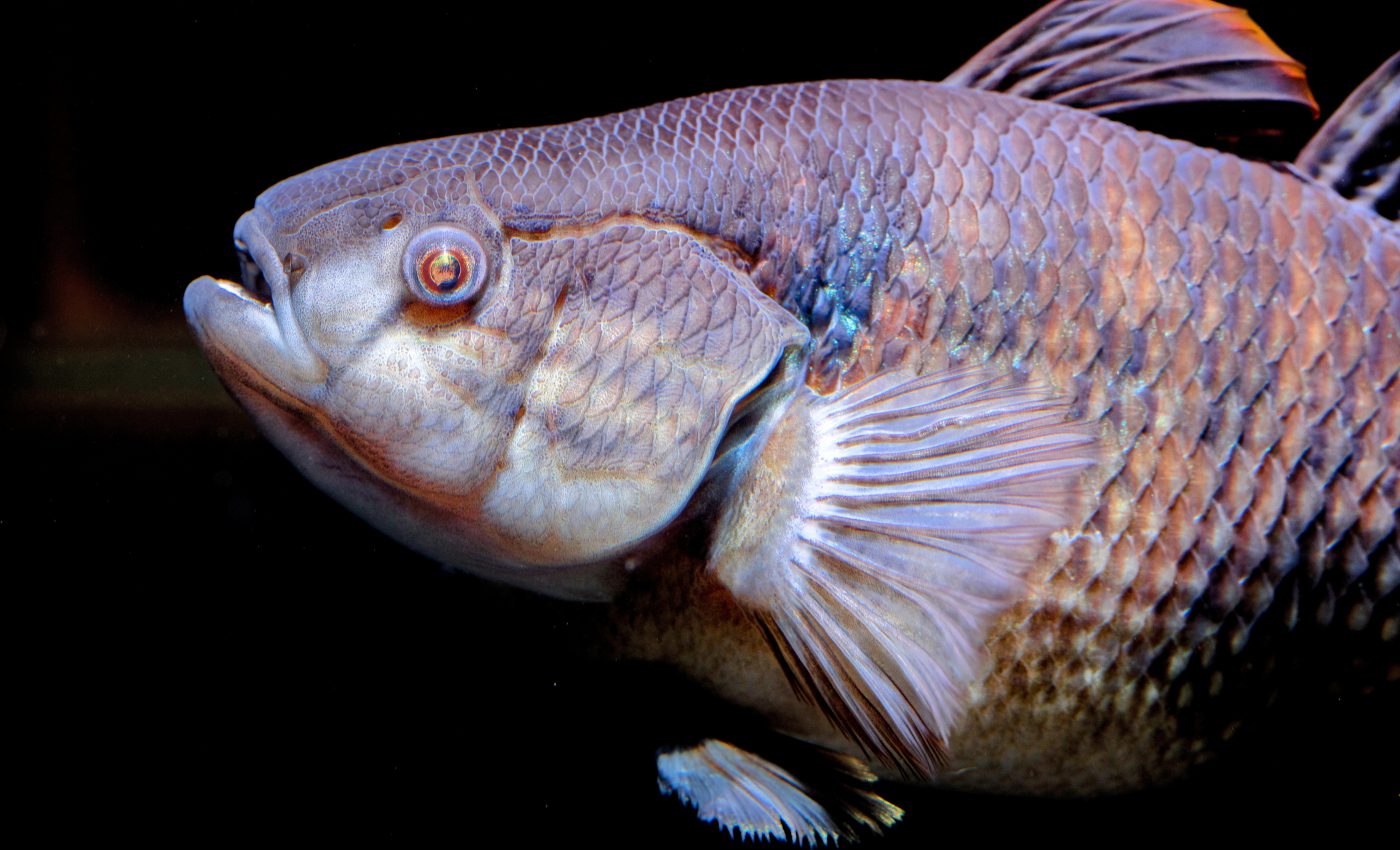
Coelacanths live about five times longer than expected
It was once thought the coelacanth – a strange lobe finned fish related to lungfish – was extinct. For a long time, science only knew this strange order of fishes from the fossil record. Then, as fate would have it, a fisherman accidentally caught one of these rare fish alive.
Coelacanths are enormous in size, but also live deep in the ocean. The inaccessibility of their habitat combined with their scarcity means that coelacanths are rarely seen or studied. A new study published by Cell Press contradicts some of what we thought we knew about these mysterious fish.
Early research tried to calculate coelacanth age by counting the rings in their scales. This research estimated that the fish only lived for roughly 20 years, which would make them one of the fastest growing of all fishes. This seemed unusual for a fish with a slow metabolism and low reproduction rate, traits usually associated with slower growing fishes.
Using advanced microscopy techniques, researcher Kélig Mahé and colleagues from IFREMER Channel and North Sea Fisheries Research Unit in Boulogne-sur-mer, France examined 27 coelacanth specimens housed in the world’s largest collection of the fish at the French National Museum of Natural History.
The researchers found that their oldest specimen was 84 years old, and that coelacanths do not reach maturity around the age of 55.
“Our most important finding is that the coelacanth’s age was underestimated by a factor of five,” said Mahé. “Our new age estimation allowed us to re-appraise the coelacanth’s body growth, which happens to be one of the slowest among marine fish of similar size, as well as other life-history traits, showing that the coelacanth’s life history is actually one of the slowest of all fish.”
Older studies looked at obviously visible circuli – calcified scale structures – to calculate the age of coelacanths. This new study looks more closely to examine microscopic circuli that are easily overlooked.
The technique is similar to counting rings on a tree or rings in the otoliths of other fishes but complicated by the necessary imagery technology.
“We demonstrated that these circuli were actually annual growth marks, whereas the previously observed macro-circuli were not,” said Mahé. “It meant that the maximum longevity of coelacanth was five times longer than previously thought, hence around a century.”
“Coelacanth appears to have one of, if not the slowest life histories among marine fish, and close to those of deep-sea sharks and roughies.”
A new study is already being planned to examine the chemistry of coelacanth scales and determine if the growth rate is related to temperature. It seems this Lazarus fish still has some surprises ahead for us.
The study is published in the journal Current Biology.
–—
By Zach Fitzner , Earth.com Staff Writer













